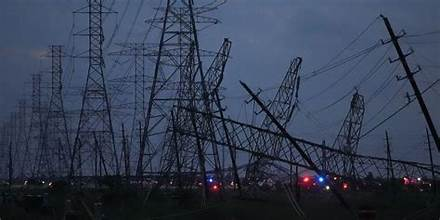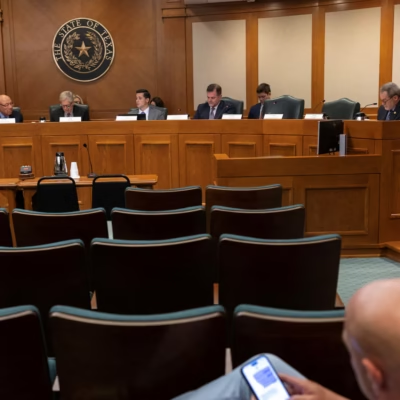As temperatures soar across the Lone Star State, the Texas power grid is once again under pressure. With heatwaves hitting record highs and air conditioners running at full blast, demand for electricity has surged to unprecedented levels.
According to the Electric Reliability Council of Texas (ERCOT), which operates the grid, peak electricity demand this week has reached nearly 85,000 megawatts—just shy of breaking the all-time record. ERCOT has issued public appeals for energy conservation as the grid struggles to keep up with the sweltering summer heat.
Why Is the Texas Grid Facing High Demand?
Texas is experiencing one of its hottest Mays in recent years. Daytime highs in cities like Austin, Dallas, and Houston are topping 100°F (38°C), which is about 10-15 degrees above average for this time of year.

This heat wave is not just uncomfortable—it’s dangerous. It forces millions of Texans to crank up their air conditioners, leading to a sharp rise in electricity usage.
ERCOT officials noted that this kind of extreme heat, combined with strong residential and commercial energy demand, places intense pressure on the grid.
ERCOT’s Plea: Use Less Power, Especially During Peak Hours
To avoid potential rolling blackouts or worse, ERCOT has asked Texans to limit power usage between 3 p.m. and 8 p.m.—the time when energy demand is usually at its peak.
Tips for Reducing Power Usage:
- Turn up thermostats by 1–2 degrees
- Avoid using large appliances like washing machines during peak hours
- Turn off unnecessary lights and electronics
- Use ceiling fans to circulate cool air
ERCOT has also warned that tight grid conditions may continue for several more days if the heat persists.
Texas Department of Emergency Management – Energy Saving Tips
What Happens If the Grid Fails?
The Texas power grid is unique in that it operates mostly independently of the rest of the U.S. grid systems. This means it cannot easily borrow power from other states during emergencies.

In February 2021, a severe winter storm caused massive outages across Texas, leaving millions without power for days. While this is a summer event, experts say the system remains vulnerable—especially during extreme weather events.
Energy analysts warn that if electricity demand outpaces supply, ERCOT may be forced to implement controlled outages to maintain grid stability. That means entire neighborhoods could temporarily lose power to prevent the grid from collapsing.
Energy Experts: The Grid Needs Long-Term Fixes
Many energy experts argue that Texas needs major upgrades to its power infrastructure to handle the changing climate and increasing population. Some believe that adding more battery storage, upgrading transmission lines, and increasing energy efficiency are key solutions.
Renewable Energy’s Role
Interestingly, renewable energy sources like solar and wind have played a major role in supporting the grid during high demand. On particularly sunny days, solar panels have contributed up to 20% of the grid’s power.
However, since solar power fades as the sun sets—right around peak usage hours—this limits its effectiveness unless paired with large-scale battery systems.
U.S. Department of Energy – Grid Modernization
What Are Officials Doing About It?
Governor Greg Abbott and ERCOT have both stated that measures have been taken to strengthen the grid after the 2021 crisis. These include:
- Increasing power plant inspections
- Adding backup reserves
- Implementing real-time monitoring tools
However, critics argue that deregulation and political decisions still hinder long-term reliability.
Consumer advocacy groups have also urged lawmakers to put more focus on affordable electricity, equitable service, and disaster preparedness.
Public Reaction and Social Media Buzz
Texans have taken to social media to share their concerns and frustrations. Some posted photos of thermostats climbing into the triple digits, while others criticized the state’s preparedness.
Trending hashtags like #TexasHeat and #PowerGridWatch reflect growing public anxiety over potential blackouts.
How You Can Stay Safe During the Heat
Safety Measures During Heatwaves:
- Stay hydrated and avoid alcohol
- Wear light, breathable clothing
- Limit outdoor activities during the hottest part of the day
- Check on elderly neighbors and relatives
- Use cooling centers if your home is without power
National Weather Service – Heat Safety
The Bigger Picture: Climate and Energy Security
Texas is not alone. Other states and countries are also grappling with how to manage rising temperatures and growing energy demands. But for Texas, where the grid is often pushed to its limits, the stakes are higher.
Climate experts warn that extreme heat events are becoming more common due to global warming. That means the state must invest more in climate-resilient infrastructure and diversify its energy mix for a more secure future.
Final Thoughts
The Texas power grid crisis isn’t just a heatwave story—it’s a warning. With demand outpacing supply and infrastructure still catching up, every degree rise in temperature puts the state closer to the edge.
The public’s cooperation, along with strong leadership and long-term investment, will determine whether Texas can weather the summer—and many more to come—without the lights going out.
Also Read – These 2 Best Spots Are Connecticut’s Scenic, Says Yankee Magazine






